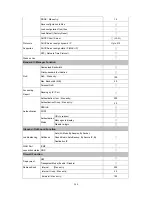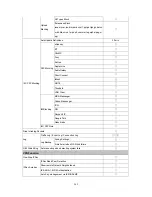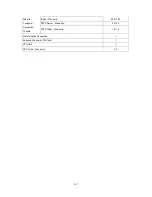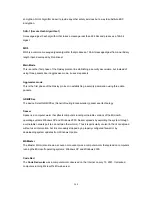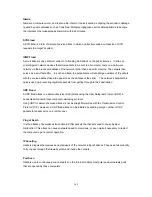
Nimda
Nimda is a computer worm, and is also a file infector. It quickly spread, eclipsing the economic damage
caused by past outbreaks such as Code Red. Multiple propagation vectors allowed Nimda to become
the Internet’s most widespread virus/worm within 22 minutes.
SYN Flood
A SYN flood is a form of denial-of-service attack in which an attacker sends a succession of SYN
requests to a target's system.
ICMP Flood
A smurf attack is one particular variant of a flooding DoS attack on the public Internet. It relies on
misconfigured network devices that allow packets to be sent to all computer hosts on a particular
network via the broadcast address of the network, rather than a specific machine. The network then
serves as a smurf amplifier. In such an attack, the perpetrators will send large numbers of IP packets
with the source address faked to appear to be the address of the victim. The network's bandwidth is
quickly used up, preventing legitimate packets from getting through to their destination.
UDP Flood
A UDP flood attack is a denial-of-service (DoS) attack using the User Datagram Protocol (UDP), a
sessionless/connectionless computer networking protocol.
Using UDP for denial-of-service attacks is not as straightforward as with the Transmission Control
Protocol (TCP). However, a UDP flood attack can be initiated by sending a large number of UDP
packets to random ports on a remote host.
Ping of Death
It is the attacks of tremendous trash data in PING packets that hackers send to cause System
malfunction. This attack can cause network speed to slow down, or even make it necessary to restart
the computer to get a normal operation.
IP Spoofing
Hackers disguise themselves as trusted users of the network in Spoof attacks. They use a fake identity
to try to pass through the firewall system and invade the network.
Port Scan
Hackers use to continuously scan networks on the Internet to detect computers and vulnerable ports
that are opened by those computers.
269
Summary of Contents for RS-3000
Page 1: ...1 RS 3000 Office UTM Gateway User s Manual ...
Page 45: ...Figure 5 11 PPTP Connection Figure 5 12 Complete PPTP Connection Setting 43 ...
Page 133: ...Figure15 3 Traffic Log Monitor WebUI 131 ...
Page 142: ...Figure15 19 Complete Policy Setting 140 ...
Page 183: ...Figure17 33 Create Folder WebUI 181 ...
Page 185: ...Figure17 35 Select Folder for Spam Mail to move to 183 ...
Page 187: ...Figure17 37 Compact SpamMail Folder 185 ...
Page 189: ...Figure17 39 Copy the File Address that SpamMail File Store 187 ...
Page 192: ...Figure17 42 Confirm that All of the Mail in SpamMail File had been Deleted 190 ...
Page 194: ...Figure17 44 Create Folder Function WebUI 192 ...
Page 196: ...Figure17 46 Select the Folder for Needed Spam Mail to Move to 194 ...
Page 198: ...Figure17 48 Compact HamMail File 196 ...
Page 200: ...Figure17 50 Copy the File Address that HamMail File Store 198 ...






